
Topics
Guests
- Ivey Camille Manybeads TsoDiné filmmaker, producer, director, script-writer and actor.
Links
We continue our Earth Day special by looking at how Indigenous peoples are protecting the Earth. We follow the journey of Ivey Camille Manybeads Tso, an award-winning queer Navajo filmmaker whose new film “Powerlands” shows how corporations like Peabody, the world’s largest private coal company, have devastated her homeland. She also connects with Indigenous communities in Colombia, the Philippines, Mexico and Standing Rock facing the same struggle. “The most important thing about the film to know is that it’s for Indigenous people, by Indigenous people … and it’s about showing this global scale,” says Manybeads Tso in an extended interview that features clips from her travels to several continents. “Powerlands” recently won the award for Best Feature at the 2022 American Documentary and Animation Film Festival.
Transcript
AMY GOODMAN: This is Democracy Now!, democracynow.org, The War and Peace Report. I’m Amy Goodman, as we continue our Earth Day special by looking at how Indigenous people are protecting the Earth, as we follow the journey of Ivey Camille Manybeads Tso, an award-winning queer Navajo filmmaker whose new film shows how corporations like Peabody, the world’s largest private coal company, have devastated her homeland. She also connects with Indigenous communities in Colombia, in the Philippines, in Mexico and at standing Rock in North Dakota facing the same types of struggles. This is the introduction to Powerlands.
IVEY CAMILLE MANYBEADS TSO: My name is Ivey Camille Manybeads Tso. And this is Dinétah, also known as the Navajo Nation. My family can trace our history to 85 generations with this land. I began working on this film to document our community’s struggle against resource colonization. Along the way, I found that we are not alone. This is a story of Indigenous people protecting and rebuilding.
AMY GOODMAN: Before we speak with Ivey Camille, this is another clip from Powerlands that features some of the Navajo elders and young land and water defenders in the film.
LOUISE GOY: [translated] They want the land from me. They want to take away my livelihood, the sheep and horses. These are the ways they try to intimidate us. If a horse roams close to the house, they say we have to pay a fee.
LAND DEFENDER: For a long time, people were terrorized with livestock impoundments, having their livestock being forcibly taken away. And, of course, that’s traumatic for people, you know?
SPIKE MANNING: They’ve done things where they’ve brought big trailers out here and have literally forced people into their homes, you know, with, like, guns. But for someone to point guns at elders and tell them to back up, and for them to just come in here and take what’s theirs, you know, it’s just not right. And, you know, it really hurts that people do that, you know?
AMY GOODMAN: For more, we’re joined by Ivey Camille Manybeads Tso, whose new film Powerlands just won the award for Best Feature at the 2022 American Documentary and Animation Film Festival. She’s joining us from Flagstaff, Arizona, where there’s a massive wildfire burning very close to where she lives.
Ivey Camille, welcome to Democracy Now! Congratulations on your film. But before we talk about the film, can you talk about this fire, that’s exploded right now in size, and if it threatens you and your community?
IVEY CAMILLE MANYBEADS TSO: Yeah. So, the fire started, I believe, Tuesday. We got the alert. It was really rapid, within like 15 minutes. There were like four — three or four evacuation notices that came out, just like literally in rapid fire. You would, like, call somebody to check, and then there’d be another street that was being evacuated because of the massive winds that were happening.
The firefighters are doing incredible to try to keep, you know, as many homes safe as possible, but there’s definitely been loss of homes and loss of property and loss of — just a lot of loss. You know, you hear stories about families who had a 1-year-old, and all they could grab on their way out the door was the child, you know, and so they’ve lost everything.
But this community really is incredible and helping everybody get together and stand together in it. On Tuesday, you know, I was out trying to help clear brush from places, especially with elders who had a hard time getting underneath their porches. But yeah, it’s pretty close. It’s moved a little bit further at the moment. But for about two days the sky was just full of smoke.
AMY GOODMAN: I mean, your film is all about sustainability. And, in fact, this fire that’s exploded to something like 20,000 acres, fanned by high winds and fueled by the dry grass that you’re dealing with — Arizona and the other western states are suffering an unprecedented megadrought brought on by the climate emergency.
IVEY CAMILLE MANYBEADS TSO: Yeah, and the desertification that’s happened around here definitely can be tied directly into Peabody coal and BHP. They were pulling thousands and thousands of gallons of water out every day and, in doing so, made it so that the water resources down below are very depleted, which means that all the plant life is dying quickly, so there’s a lot of brush for it to move. And then the winds, as I’ve heard from recent people, is just — they’re going to keep staying this way. We’re going to have high winds in this area due to climate change.
AMY GOODMAN: Well, I want to go back to another clip of your award-winning film, Powerlands, on the resistance of Diné, of Navajo youth.
IVEY CAMILLE MANYBEADS TSO: Younger generations are returning to Dinétah, building unity and resistance.
KIM SMITH: This lake, it’s called Morgan Lake. It was built to cool down the power plant, which is one of the dirtiest coal-fired power plants in the country. They’ve extracted uranium. They extract oil and gas by fracking. They extract coal. All around, there is this resource colonization, this resource extraction.
MAKAI LEWIS: An average person in Phoenix uses about 200 gallons per day, as far as domestic use. And a person in Big Mountain, they use about 12 gallons a day. You know, corporations and dirty politicians, they’re all about money. You know, they want money, money, money, money. I’d like for these guys to have them try to eat money, you know, and see what happens to them; have them drink oil or drink water that’s contaminated with oil, you know? I don’t think they’re going to last.
AMY GOODMAN: So, Ivey Camille, you deal with coal here. Talk more about the largest private coal company in the world, that people, particularly Native peoples, in Arizona are dealing with — Peabody — and the whole issue of how it has affected your livelihoods, your lives.
IVEY CAMILLE MANYBEADS TSO: Yeah, well, I was born into the resistance out of Black Mesa. The matriarch of my family, May Tso [phon.], passed away in 2021 due to COVID. And, you know, we saw that throughout the rez. But so, I’ve grown up having it impact in my entire life. I grew up knowing about HPL versus NPL and what that meant, and what it meant to carry my name and carry that forward into the world, and how you need to hold yourself as an Indigenous woman, and as well as, you know, I was taught, being raised, that we are shepherds, that we do not own the Earth. We belong to the Earth. And so, in that sense, we have to make it better and continue doing so. And one of the ways to do that currently is to help stop climate change and to help stop this massive extraction of these very precious resources.
AMY GOODMAN: You know, before we move on to the global picture, I wanted to ask you about an issue you refer to in the film — you don’t focus on it, but it’s certainly one I’m sure you know. Earlier this week, Marketplace published an article titled “A ban on Russian uranium could impact tribal communities in the Southwest.” The article reports, “Some U.S. lawmakers, unhappy with American nuclear power plants’ reliance on imported Russian uranium, are pushing for a ban on those purchases. About 16% of the uranium that fuels the electricity-generating facilities comes from Russia, and an additional 30% is imported from Russia’s partner nations Kazakhstan and Uzbekistan. If the ban comes to pass, the U.S. uranium industry would have an opportunity to ramp up domestic mining. But many Indigenous communities are still reeling from the impact of the last U.S. uranium boom. On Navajo lands, for instance, there are more than 500 abandoned mines, according to the Environmental Protection Agency.” So, that was a report from Marketplace. But the residue of the impact that uranium mining has had on Indigenous communities, particularly the Navajo, the Diné, particularly the Hopi, in Arizona?
IVEY CAMILLE MANYBEADS TSO: Yeah. I mean, I grew up knowing where the open pits — where they’re just filled in with concrete. That’s the only protection against them. The miners — the old miners would actually be given blocks, that weren’t usable blocks but would still have radiation and uranium in them, and they would build their houses with it, so it would infect, you know, their wives, their children and generations on. So, we’re still dealing with those. And all it is to stop those buildings is just a fence. And I’ve grown up seeing it. You know, we get taught knowing not to drink certain water sources because they are contaminated with uranium.
And a lot of people don’t have any options. You look at places like Cameron, where it has some of the highest radiation in the entire world, and it’s like everyday people are living there and doing their things. And it’s right off of 89, which right now is affected by the fire right. But there are tourists and people going through every single day, so it’s not just affecting, you know, the Diné Nation. Like, it’s affecting everybody who’s passing through it. Any truck drivers, tourists, whatever, you’re unwittingly and unknowingly being contaminated by these open pits and leftover radiation that we are still attempting to clean up and deal with.
AMY GOODMAN: And, of course, these uranium tailings, highly carcinogenic. The issue of cancer in the Navajo and Indigenous communities in the Southwest, Ivey Camille?
IVEY CAMILLE MANYBEADS TSO: Yeah, we’re seeing a huge spike within cancer rates. There’s issues with pregnancy. There’s issues — there’s so much that you can see. It’s really — just without going into statistics, just looking around, you’re seeing people get cancer who it doesn’t normally pop up in our family bloodlines. You’re seeing people losing certain, like, mental faculties quickly, like way faster than they should be, because of this radiation. You can see the effects all over the rez, and then even in outspreading, outlying areas, because they’re also being contaminated. It’s not just like contained in a city.
AMY GOODMAN: Well, we want to continue on the theme of your film Powerlands after this break. We’re talking to Ivey Camille Manybeads Tso, an award-winning queer Navajo filmmaker. Her film, Powerlands, just won the award for Best Feature at the 2022 American Documentary and Animation Film Festival. Stay with us.
[break]
AMY GOODMAN: “In the River” by Raye Zaragoza, as we continue our Earth Day special here on Democracy Now! I’m Amy Goodman. We’re speaking with Ivey Camille Manybeads Tso, award-winning queer Navajo filmmaker, whose new film Powerlands just won a major award, follows her journey examining corporations like BHP, that have devastated her home, and connecting with Indigenous communities in Colombia, the Philippines, Mexico and Standing Rock facing the same struggles.
We’re going to another clip from Powerlands now. We go to the peninsula of La Guajira in the northern tip of Colombia, close to the border of Venezuela. This is the site of the Cerrejón large open-pit coal mine owned by the U.K.-Swiss-Australian conglomerate of BHP Glencore. This is Ms. Eneida, who’s been repeatedly displaced by Glencore, in the film Powerlands.
ENEIDA: [translated] They took away our water and our electricity. They took everything away, because we had to leave one way or another, taking things away from us to force us out.
AMY GOODMAN: A clip from Powerlands. Tell us who Eneida is, as well as what is happening in Colombia now, Ivey Camille.
IVEY CAMILLE MANYBEADS TSO: Yeah. So, really, Eneida and all of the women in the film are these matriarchs of these communities that’s — in traditional Diné culture, we’re a matriarchal society. So, they’re the ones leading the resistance. They’re the ones cooking the food. They’re the ones holding these communities. They’re the ones holding the space for it. So that’s one of my favorite parts of the film, is seeing all these, like, really strong, incredible Indigenous women.
And then, in Colombia — oh, shoot, I should have been more prepared — there’s still resistance going on. There’s a lot — there’s a lot to be told about it, and really everywhere. I think, truthfully, the most important thing about the film to know is that it’s for Indigenous people, by Indigenous people — or, an Indigenous person — and it’s about showing this global scale, because it’s Colombia, Oaxaca, Standing Rock, Black Mesa and the Philippines. All of these places seem so vast and far apart, but, truthfully, it’s everywhere.
There were so many places that we reached out to that weren’t ready to speak with us at the time, weren’t ready to go there. And we are seeing them coming out with their stories now. But, truthfully, so many of these communities, like in Colombia, have no Wi-Fi. They don’t have access to being able to reach out to other people. All of the energy is being sourced from these communities, but they get none of it for themselves. And so, having a film like this and showing it and having a way to be able to tell all of these communities, like, “You’re not alone. We’re all here with you. And here are more forms of resistance. Here are more people continuing to fight. And, like, please, tell your own stories.”
AMY GOODMAN: I mean, it’s amazing what you show in Colombia. You say the coal from that mine is shipped to Europe, about a third sent to the U.S. and elsewhere in the Americas. The mine is taking over about 270 square miles of land, larger than the city of Chicago?
IVEY CAMILLE MANYBEADS TSO: Yeah.
AMY GOODMAN: And can you talk about all the forms of resistance, from the food to the language, the art, the culture?
IVEY CAMILLE MANYBEADS TSO: Well, and I think in all of these Indigenous communities, the simple tasks are the ones that preserve our culture and our heritage, because there’s a massive genocide going on. They are wanting to eradicate our voices. They want to eradicate our ways of life. They want to eradicate our culture. And so, continuously going out and listening to an elder speak, learning how to cook the traditional foods, learning how to make the traditional clothes, learning how to make the traditional tools are especially helpful going forward in this climate change, because we have obviously lived in extreme climates, and so we know how to farm in desert climates without using up all the water. There’s lots of different resources that can go forward just in the Indigenous communities and Indigenous worlds.
And I think that those simple things — you know, as a kid going out and listening to my grandma, I am so thankful for the moments that I got to have with her, because every time an elder dies, that entire lifeline of stories and everything dies with them. And so the more people who go out and hear those stories and document them, the more we will have for this preservation.
AMY GOODMAN: So, we’re going to continue on your journey, Ivey Camille. Powerlands features the community of Bong Mal in the Philippines, in Mindanao, where Indigenous Earth defenders successfully forced out Glencore’s copper mine, a gold-copper mine, in Tampakan in 2015. This is a clip.
EARTH DEFENDER: [translated] The central part of our area here is where they planned to put a wastewater dam. I told our people here to listen to their hearts before allowing the mines in. We know what their intentions are: to seize our resources.
AMY GOODMAN: I want to continue on the journey and then have you put these two together, going from the Philippines to Mexico, to specifically to Oaxaca. In Powerlands, this is one of the Earth defenders, Ivey Camille, that you speak to.
DOMITILLO VELAZQUEZ RODRIGUEZ: [translated] We’ve seen in other towns that, no, it’s not true that wind projects bring benefits. And people realized that. And they decided to fight back with a resounding no. Why? Because we live off the ocean.
AMY GOODMAN: Zapatec and other Indigenous communities in the region have for years been resisting wind farm megaprojects that are displacing them from their ancestral lands. And that’s particularly interesting as you fight for sustainability. We’re talking about wind farms. Work your way backwards. Start here in Oaxaca, and then we’ll talk about the Philippines.
IVEY CAMILLE MANYBEADS TSO: Yeah. Well, one, that clip that you just played, being on set with that man was incredible. I don’t speak Spanish, and so I was just feeling what he was feeling, and then getting translated afterwards. But the emotion, the care, the love that is in all of these is evident even without words from these communities. It’s incredible.
And, yeah, in Oaxaca, you’re seeing a massive displacement that’s going on. Without proper care and treatment of these wind farms, you’re also seeing pollution entering water sources. You know, that’s cutting off their food resources. So, what’s really incredible about Oaxaca is they are doing the — oh, what’s the actual — they are making their own community wind farm that’s going to be held to higher standards and also will provide power to that community, because, again, these communities aren’t being provided the power that they are giving to the rest of the world. Yeah, Oaxaca was incredible to see these people, so much color and light and everything coming out of it. I think that was one of my favorite places to film, because, without language, like, it was just incredible.
AMY GOODMAN: And your time in Mindanao, your time in the Philippines, the struggle that is going on there?
IVEY CAMILLE MANYBEADS TSO: Yeah. So, I was not able to go to the Philippines. My producer, who you’ve actually had on before, Jordan Flaherty, was there for the Philippines. But, really, it was incredible. Again, the same struggle, the same resistance. You’re seeing these people, like, show these foods and these ancestral healing things that I know we have here on the reservation, and you’re seeing in every single community we’re going to. There’s things to treat chronic cough. There’s things to treat, you know, like, sore hands, bad backs, even stomach problems that we don’t have currently going around. But when we listen to these Indigenous communities, you’re finding out the root basic of a lot of the pharmaceuticals that we have also in those, where it originally comes from. And it’s brilliant to see.
AMY GOODMAN: So, Ivey Camille Manybeads Tso, as you take us on this journey in this powerful film called Powerlands, talk about why you called it Powerlands. You’ve been doing this since you were 19. What started you on this path?
IVEY CAMILLE MANYBEADS TSO: Yeah. So, yeah, we’ve been doing it for about eight years. What really started was — Jordan had been filming in Colombia. I was filming in Black Mesa. And we were looking at the parallels between them, and they’re both affected by BHP. And, you know, if you took away the language, I would not tell the difference between Colombia and Black Mesa, besides maybe the monkeys. It is incredible. You know, growing up in Black Mesa, we would constantly have to be careful of, like, what day the mine was going or what things, because you would have the coal coming down and affecting clothing or affecting certain livestock. And it was the same stuff that we were hearing in Colombia. And that was really the beginning of this story, was seeing the parallels.
And then, from there, Jordan went to the Philippines. While we were in Oaxaca, that’s when I found out about Standing Rock, and so we went up to Standing Rock immediately afterwards. And Kim, who is one of the people featured in the film, was one of the first people to arrive at Standing Rock and set up there. And it’s been cool to also see how that transition between communities and the collaboration that’s been going. Even recently, Bettina [phon.] was in L.A. working with my composer, who’s also been on the show, Daniel French, and was able to speak with him as he was making the soundtrack for the film. And it was really cool, because that influenced it, as well.
AMY GOODMAN: Finally, Ivey Camille, you say, as you cover the resistance around the world, your film is part of that resistance. We have 15 seconds.
IVEY CAMILLE MANYBEADS TSO: Yes, this film is for Indigenous people. You are not alone. We are here. And if anyone else learns something from it, great.
AMY GOODMAN: Ivey Camille Manybeads Tso, award-winning queer Navajo filmmaker who directed the new film Powerlands, just won the award for Best Feature at the 2022 American Documentary and Animation Film Festival.
For more of our coverage on the climate catastrophe and the Indigenous struggle to protect the Earth — well, every day is Earth Day here at Democracy Now! — go to democracynow.org.
Oh, we have an immediate job opening for a news writer/producer. Go to democracynow.org for more information and apply immediately. I’m Amy Goodman. Stay safe.

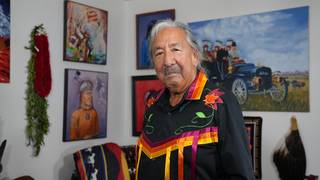
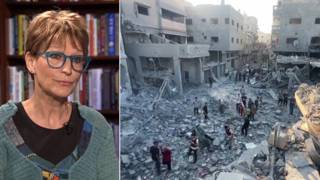
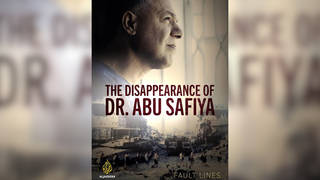
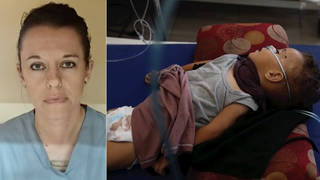
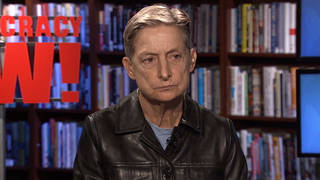
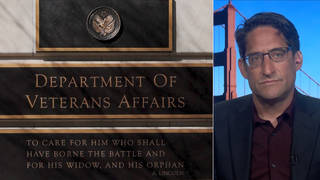
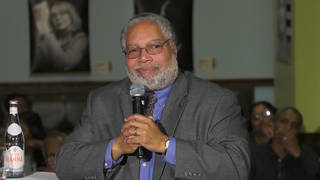


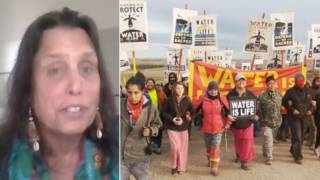
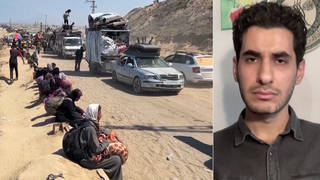
Media Options